Alan & Sandra’s Incredible Cross Country Adventure
Hungary Budapest + Miskolc
Slovakia Košice + Tatra National Park + Bratislava
Czechia Brno + Český Krumlov + Karlovy Vary + Prague
Germany Saxon Switzerland
Trip Overview
We began our adventure in Budapest Hungary, and continued overland to eastern Hungary and Slovakia, then back west to Bratislava, zig-zagged through the Czech Republic, and finally ended up in Prague. All this region was previously part of the Austro-Hungarian Empire, which lasted from 1867 to 1918. Czechoslovakia broke off from the empire in 1918 and Czechia and Slovakia parted ways in 1992. Even though these areas are now three separate countries, they are still closely linked culturally to each other. 9% of the residents in the Czech Republic and 8% of Slovakia still consider themselves to be ethnically Hungarian. You might notice that I used two names for the same country. The names Czechia and Czech Republic are both correct.
During our adventure, two themes were covered in almost every guided tour we took. These were the stories of the Jewish community and of the Communist era. Before World War II this region was home to 940,000 Jews representing 4.4% of the total population. This ratio was far greater in the urban areas. Today only 50,000 Jews reside within these three countries, making up only 0.2% of its population. The communist controlled this region from 1949 to 1989. Though it has been 35 years since the Iron Curtain fell, many physical, economic, political, and emotional scars remain today.

I'm a paragraph. Click here to add your own text and edit me. It's easy.
Český Krumlov
Budapest Hungary
Overview – Even that Budapest was first settled in the 2nd century, the city was not formally established until 150 years ago when the communities of Buda on the west bank of the Danube and Pest on the east bank decided to join. We happened to arrive in town a day before this anniversary and were able to witness the most amazing fireworks show we have ever seen. Budapest is renowned for its romantic architecture, Baroque domes, charming streets, and beautifully illuminated bridges.
Getting Around – Budapest does not have a defined old town like other European cities we have visited, so its major sights are scattered throughout the city. However, Budapest has an excellent mass transit system, so it was easy to get everywhere.
Demographics – Budapest is the capital and largest city in Hungary with a Metro population of three million.

Heading 6

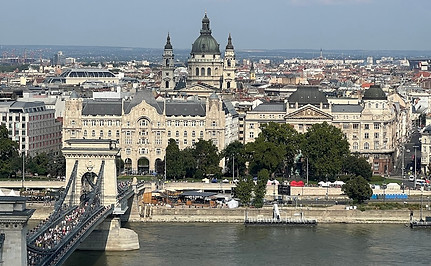
Heading 6


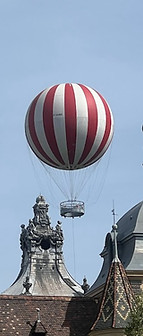
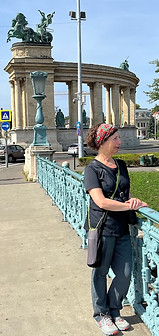
Buda Castle – Sitting atop Castle Hill with its neoclassical Habsburg-era grandeur and its large copper-green dome, Buda Castle dominates the skyline. First completed in the 1200s, the Baroque palace that occupies most of the complex today was built in the 1700s. The castle was severely damaged during World War II. They did a good job of bringing back the exteriors to their former glory, but did not have sufficient funds to completely restore the interiors. If you do not want to hike up the hill, there is an option of taking a pricy funicular. The grounds are free to walk through, and the interior spaces are home to a variety of museums.

Fisherman’s Bastion – Located just north of Buda Castle, the bastion was built in the 1700s forming part of the walls of the castle and now offers the best views of the city.
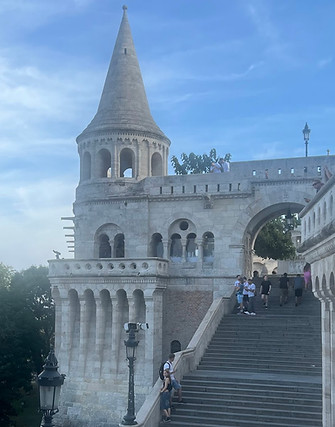

Hungarian Parliament Building – This neo-Gothic Parliament building which was Inspired by the British Parliament and the Palace of Westminster in London dominates the Pest bank of the Danube and is a true postcard superstar. The building’s facade is decorated with statues, pointed arch arcades, gargoyles, spires, and Gothic ornaments. When built in the late 1800s, it was the largest parliament building in the world. The ticket to see the interior of the building is pricy for non-EU citizens.
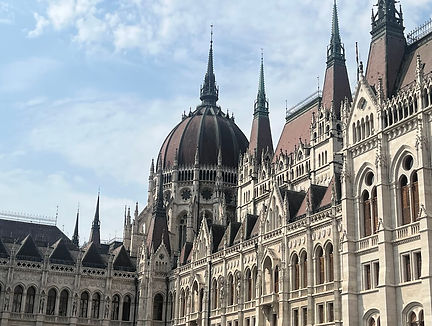

Cruising the Danube – A major thing to do when visiting Budapest is to take a one-hour river cruise . There are numerous companies offering this service. We took an evening cruise which is far more popular than the daytime ones so the boat was packed.

Hungarian Parliament

St Stephen’s Basilica – Constructed in the 1800s in a neo-classical style, St Stephen's built in honor of Stephen the first king of Hungary, is Budapest’s largest church.


Dohány Street Synagogue – Built in the 1800s, this is the 9th largest synagogue in the world capable of housing over 3,000 worshippers. Since World War II, weekly sabbath services rarely attract more than fifty individuals. The synagogue’s architecture was constructed in a Moorish Revival style as a reminder to the shared roots and cultural heritage of the Jewish and Arabic peoples. An entrance fee is required which includes tours in a variety of languages and the excellent Jewish museum.
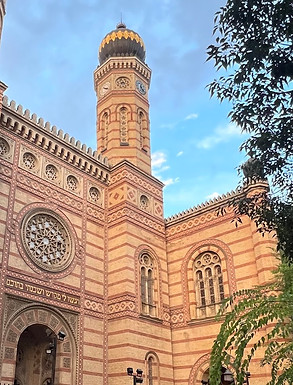

Shoes on the Danube Bank – This memorial is composed of replicas of sixty pairs of men’s women’s and children’s World War II era shoes that were cast in iron. It was created in remembrance of the Jews that were lined up on the bank of the river, shot and thrown into the water. At that time there was a shoe shortage, so the victims were instructed to take off their shoes before being shot. These atrocities were conducted by the Hungarian fascist group the Arrow Cross, and not by the Germans.
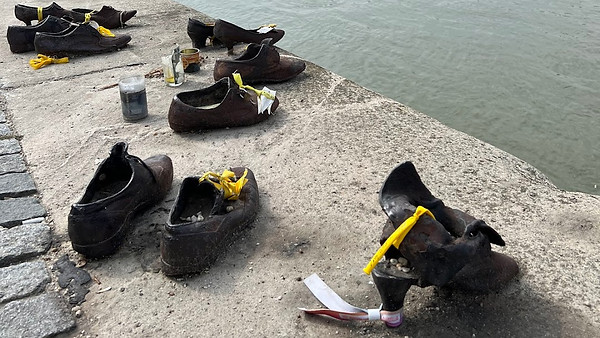
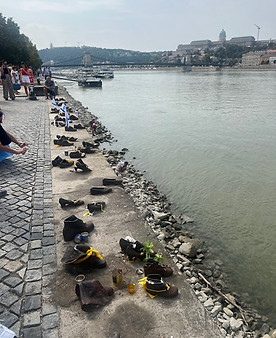
Vajdahunyad Castle – Sitting in Varosliget Park, this building is not a real castle, but a rather picturesque replica of a Romanian castle. Vajdahunyad was built in 1896 for an exhibition and is now being used as a museum. To get to the castle we took metro #1 which is the second oldest subway line in the world. Riding this line makes one feel as having been transported back to the 1800s.


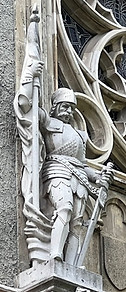

Ruin Pubs – In the early 2000s, a group of young entrepreneurs looked at the derelict courtyards and buildings of the historic Jewish Quarter and envisioned a new life for these spaces as quite, unique makeshift pubs. What makes these bars distinctive is their rustic charm that leans heavily into the imperfections of the abandoned spaces. Inside these venues, you’ll find walls adorned with graffiti, and furniture salvaged from flea markets. Our favorite ruin pub was Szimpla Kert or Simple Garden, an abandoned factory transformed into a sprawling labyrinth of bars, lounges, cozy nooks, art installations, and courtyard offering live music and street performers.


Szentendre – Szentendre is a small scenic town a short 50-minute train ride outside of the city that is a perfect destination for a day trip. The main things to do here is to walk the cobblestone streets visiting the towns many art museums, galleries, and gift shops. We especially enjoyed The Kovács Margit Museum that had an incredible collection of her ceramic art. Another main attraction is the Hungarian Open Air Museum which is a 150-acre compound housing 312 buildings in eight unique Hungarian regional villages spanning the periods from the mid-1700s to the mid-1900s.
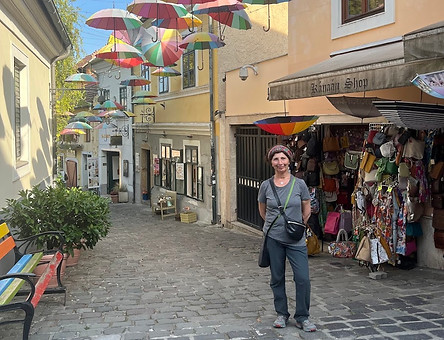

Heading 6

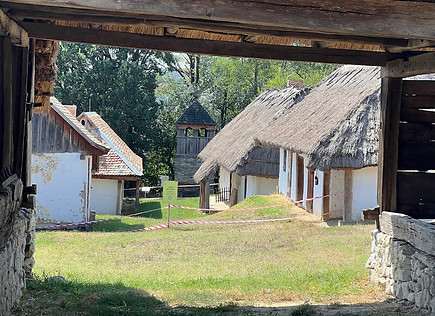
Miskolc Hungary
Overview – We had extra time and wanted to experience more of Hungary than just Budapest. Kosice in eastern Slovakia was high on our list of places to visit, and Miskolc appeared to be the best option along our train route. Compared to the other cities we visited, we did not find Miskolc to be particularly interesting. The city's main attraction, Diosgyor Castle, was closed during our visit and there was only a few other things we wanted to do there. If you have a limited amount of time available, I would not recommend making a special trip to visit this city.
Cave Bath of Miskolctapolca – The baths which date back to the 1700s are made up of a series of natural and man-made caverns and passageways formed in a cliff wall. The water that bubbles up from hot springs is a constant 86 degrees. The caves are a beautiful place to unwind, for some to smooch, and for kids to have a blast. If you are lucky, you can find a quite corner to relax.


State Forest Railways of Lillafured – This narrow-gauge railway was originally built in 1920 to take tourists up and lumber down the Bukk Mountain. Today it is only being used by tourists who enjoy the 45-minute ride passing through heavy forests and canyons to reach Lillafured where you can visit the Palace Hotel, the hanging gardens, the Lillafured waterfall, the Anna Cave (tours only in Hungarian), and Lake Hámori. Lillafüred was a beautiful area to visit, and the train ride was a total delight.
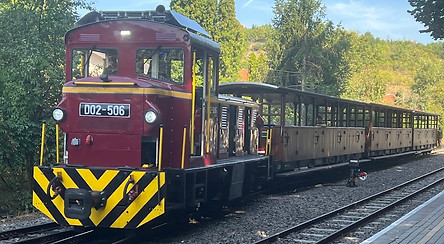


Košice Slovakia
Overview – Košice is an out of the way destination but definitely worth the time spent traveling to get there. The city is a jewelry box of Gothic towers, medieval architecture and baroque sculptures. This city is off most traveler’s radar, so it is much less crowded than more popular destinations such as Budapest. We found that two days spent in this beautiful city was enough time to see it all.
Demographics – With a population of 240,000, Kosice is Slovakia’s second largest city. Before World War II, Jews made up 17% of the city's population. Today they make up 0.1%.
Getting Around – Everything worth seeing in Kosice is within easy walking distance. Even the train station is only a few blocks from the old city.
Old City – The old town which dates back to the 1200s, has been very well preserved and experienced limited damage in World War II. The small old city is full of attractive historical buildings, some dating back to medieval times, with only a handful of modern buildings to mar the surroundings. Most of its main attractions are located along one street, Hlavna Ulica (Main Street), a long plaza filled with sidewalk cafes that come alive in the evening hours.

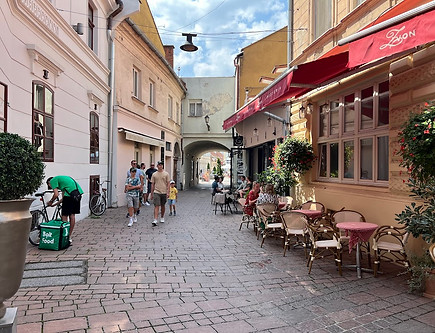
Heading 6


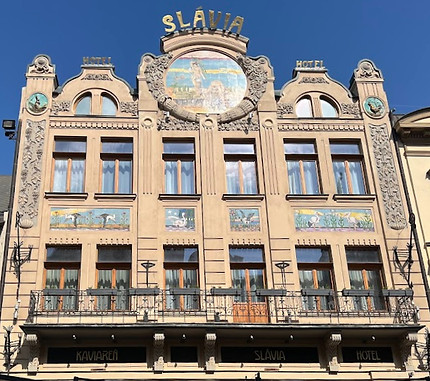
Heading 6

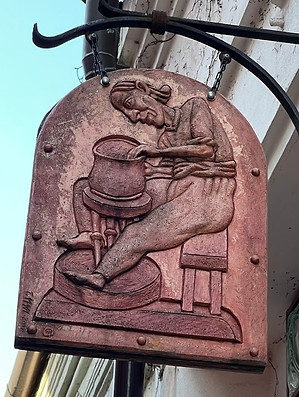

St Elizabeth's Cathedral – The cathedral, the largest in Slovakia, dominates the Košice skyline and can be seen from almost everywhere in the old city. The cathedral was built in the 1400s in a High Gothic style. The cathedral's architect did not approve of his wife's heavy drinking and decided to immortalize her on the side of the building. For an additional ticket you can ascend the tower’s narrow (way too narrow for two-way traffic) 160 stone steps for the best views of the city.
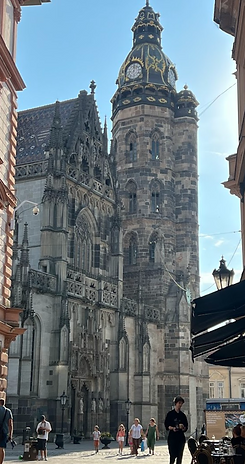
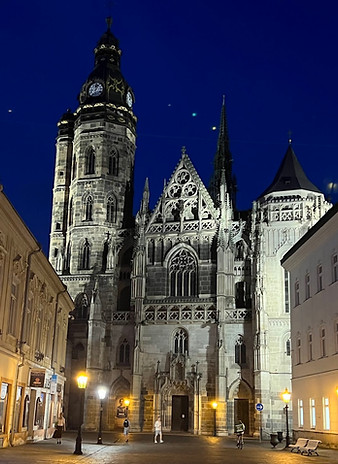

Heading 6
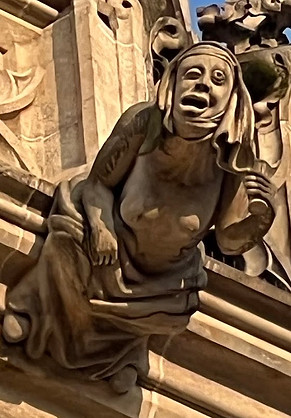

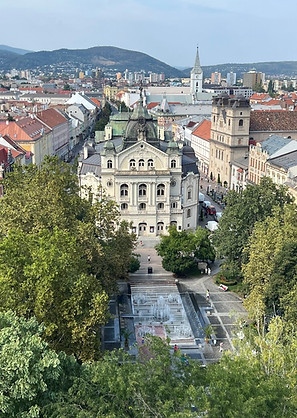
Singing Fountain – The fountain built in 1986 sits across the National Theater and is the main attraction in the center of Košice. It draws in the crowds with Its water jets synchronized to a music soundtrack and at nighttime doubles the fun with the waters illuminated in a vibrant show of colors.


Lower Gate Underground Museum – The underground remains of Košice’s lower gate fortifications and waterways dating from the 13th to 15th centuries have been incorporated into a museum. It was fun getting lost in the maze-like passageways and imagining the city's past.
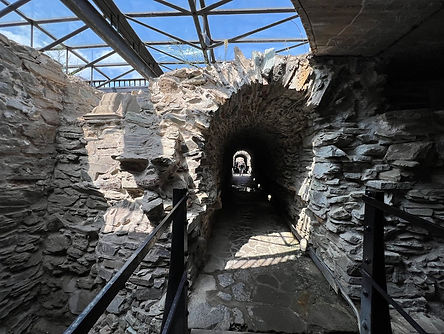

Tabačka Kulturfabrik – Located just outside of the old city, this former tobacco factory was converted in 2015 into spaces for discussions, contemporary art shows, music productions, theatre, dance performances and bars. It was a great place to hang out after a long day of touring.
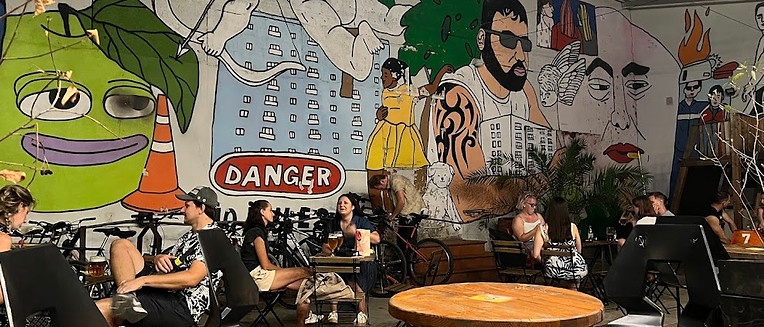
Poprad Slovakia
Overview – The only reason we chose to visit Poprad is that it is located on the Kosice to Bratislava train route and that it is the nearest city to Tatra National Park. We spent our three days there hiking and exploring the countryside, so by the time we got back, it was too late to visit the few attractions the town had to offer. We did make it on time one evening to see an Italian Abba cover band performing at a street festival.
Getting Around – The only way to see the nearby sights is by renting a car.
Spis Castle – The ruined castle dominates the surrounding countryside. Built in the 1100s with a Romanesque style, it had many owners and experienced multiple architectural transformations including Gothic and Renaissance. The castle, a 30-minute drive from Poprad, was abandoned and later destroyed by fires in the 1700s. At the time of our visit, the tower portion of the castle was closed to the public for restoration work.

Heading 6
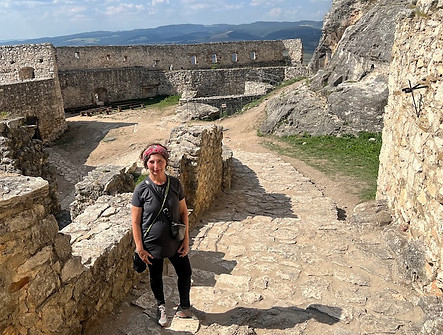

Popradske Pleso - Popradske is a pristine mountain lake of glacial origin sitting at 4,900 feet above sea level. The lake is at the end of a paved single lane road, 2.5 miles and 670 feet above the parking area. At the lake there are a couple of restaurants and a hotel. Hotel guests who do not hike or bike in with their gear can take an early morning or late afternoon shuttle. Once you reach the lake you have three trails to choose from. One trail that is a 1.5-mile loop around the lake and two others that zig zag up opposing mountain sides.

Heading 6

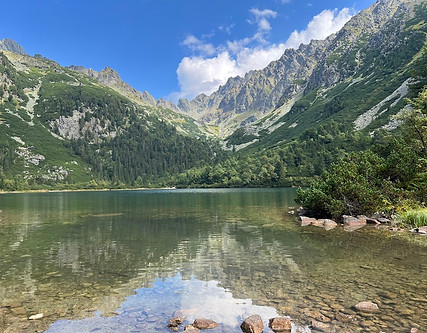
Štrbské Pleso – Štrbské is a mountain lake lined with a couple of upscale wellness hotels offering fantastic views of the Tatra Mountains in the distance. The resort village offers an array of downhill ski runs in wintertime and hiking trails and water activities in the summer. We enjoyed the 1.8-mile trail that loops around the lake.


Skok Waterfall Trail (4.5 miles – 1,130 feet elevation gain) – The trail started at the outskirts of Štrbské Pleso as a gentle climb, first through a forest, then becoming a rocky trail with views of the surrounding peaks. The views were spectacular, but the waterfall itself at the time of our visit was quite underwhelming. From here the trail takes a steep climb past the waterfall to a couple of small lakes. We had enough for the day and decided to head back down. Descending the trail was not easy for me being that I do not use poles like Sandra does. The path was very rocky, so I had to concentrate on every step I took out of fear of turning an ankle
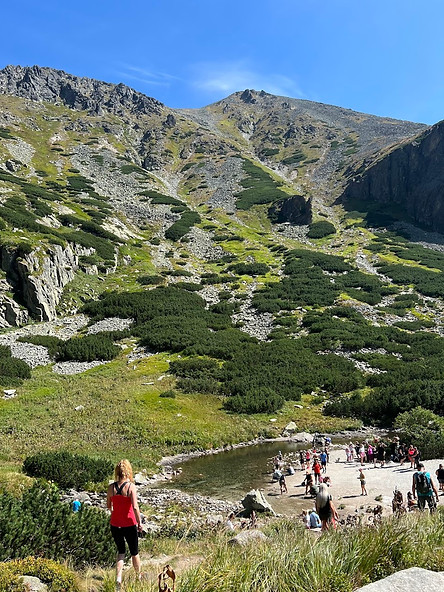

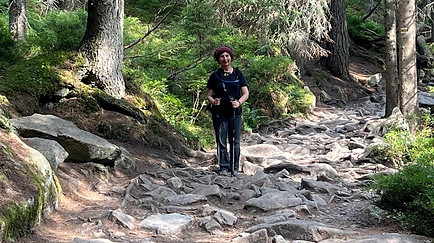
Bratislava Slovakia
Overview – Bratislava is a mosaic of medieval architecture, Gothic edifices and baroque palaces in its old town, and a plethora of homely communist-era block apartments and office buildings in much of the remaining city. Bratislava is the world’s only national capital that is bordered by two other countries. It is only a 15-mile drive from downtown to reach the Hungarian border, and only a six-mile drive to reach the border with Austria. Yet during the communist era, Austria existed in a totally different world. If a Slovak was caught trying to cross the border, they would either be shot or expect a long prison sentence. Today, when you take the one-hour train to Vienna, you would only know when you cross the border if you have a special app that dings your phone.
Getting Around – Almost everything we wanted to see was in the old city. For destinations outside of this district, there was very good mass transit.
Demographics – Bratislava is Slovakia’s largest city with a metro population of 730,000.
Old City – Even though Bratislava’s old city survived World War II mostly intact, much of it was later leveled, including the entire Jewish quarter, by the communist authorities s in a move to "modernize" the city. As much as a fourth of the old city was demolished for a single project of building a bridge and adjoining expressway across the Danube During the communist period the old city was considered a grim, and dangerous place to visit. After the communists departed, the local government spent a lot of energy revitalizing the area. Today the old city is bursting with colorfully restored facades, swanky boutiques and vibrant outdoor cafés that come alive during the evening hours. Even though Bratislava is a great tourist destination, it is not as crowded as nearby Prague, Vienna and Budapest.
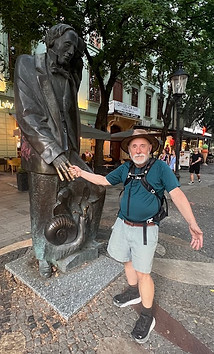
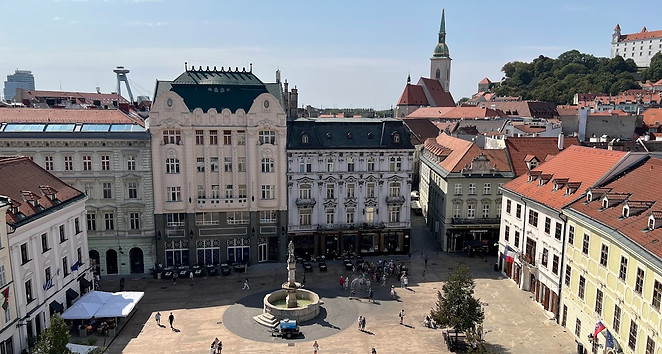
Heading 6
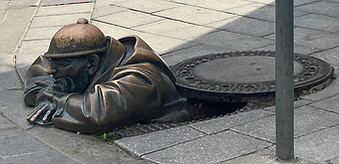
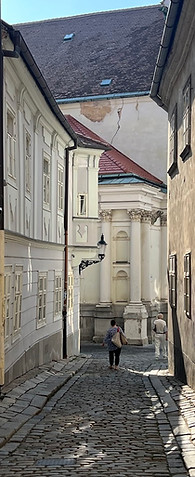
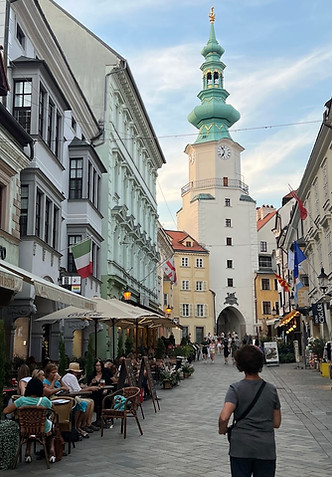

Heading 6



Main Square (Hlavne Namestie) – The main square for the old city contains great examples of architectural finery with its Old Town Hall, a complex of attractive 14th and 15th century Gothic buildings, a neo baroque palace, and the beautiful Roland's Fountain.



Bratislava Castle - This castle's origins dates back to the 800s. In the 1400s it was reshaped as a Gothic fortress, later in the 1500s in a Renaissance style, and in 1811 was partially destroyed by fire. Today, most of the building is occupied by a history museum. Entering the grounds of the castle and its manicured baroque gardens is free of charge. From this point, on a clear day, you can see both Hungary and Austria.

Devin Castle – The castle sits on top of a cliff 700 feet above the confluence of the Danube and Morava Rivers. Construction on this ruined castle is believed to have begun in the 800s but most of what is on view today is from the 1200s. Being that the castle sits on the Danube bordering Austria, during the communist period it was part of the Iron Curtain. During that time, the area surrounding the castle was a restricted military zone with watchtowers and barbed wire. Inside the castle is an interesting exhibit on this period. Devin is a 50-minute bus ride from the old city.
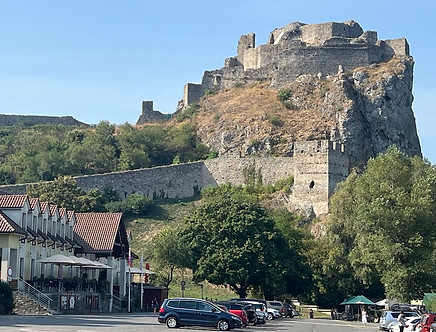
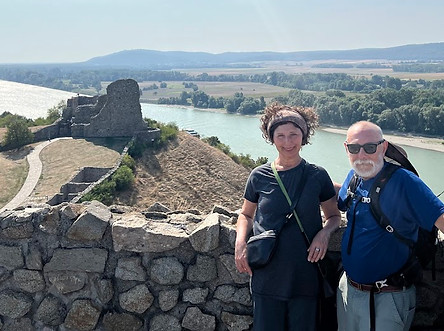
Brno Czechia
Overview – Founded in the 1000s, Brno is one of the oldest cities in this part of Europe. The city reached its zenith during the times of Austro-Hungarian Empire and many of the fabulous building from this period are still on remain today. Even though Brno is the Czech Republic's second biggest city we found it to be cozy and laid back with few tourists in sight. Brno is home to six universities and over 60,000 students. So, you can imagine what effect this would have on the culture and nightlife of the city. Brno is a vibrant cosmopolitan city with loads of art museums, music venues, great cafes, pubs and cheap ethnic eating options. We spent three days In Brno, and that was the perfect amount of time to see everything.
Getting Around – Almost everything we wanted to see was in the old city or a short walk away. Even the main train station borders the old city.
Getting There – Brno sits along the major railroad connecting Bratislava to Prague with frequent trains passing through the city daily.
Demographics – With a metro population of 400,000, Brno is the Czech Republic’s second largest city.



Heading 6
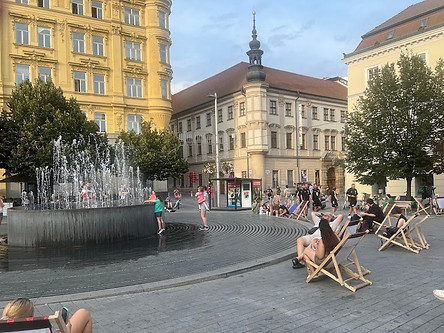

Cathedral of St. Peter and St. Pauldra – This 14th-century cathedral built in an early Gothic style atop Petrov Hill was originally the site of a pagan temple to Venus.

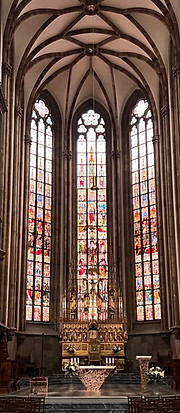
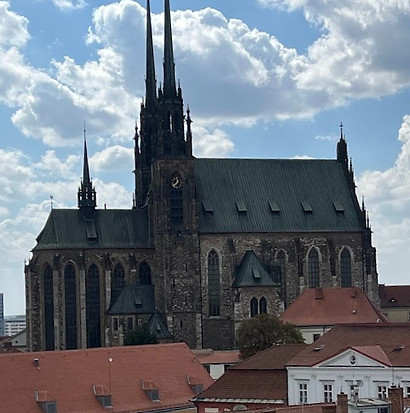
Capuchin Crypt in Brno – One of the main attractions in Brno is this ghoulish cellar crypt containing the mummified remains of nearly 150 monks, abbots and local notables from the 1700s. During this time coffins were reused, so the dead bodies would be laid on the floor of the crypt with their heads resting on a brick as a pillow. This dry, well-ventilated crypt and topsoil composition made the perfect spot to naturally turn dead bodies into mummies. This practice ended in 1784.
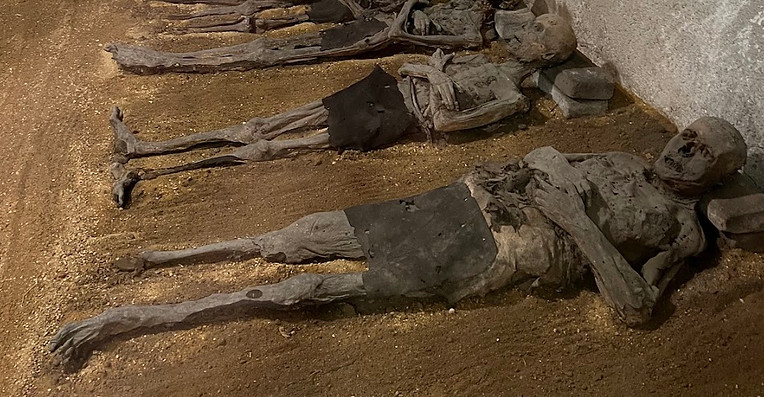
Ossuary at the Church of St James – If you haven’t satisfied your ghoulish cravings with the crypt, you can also visit the local ossuary. This ossuary, the second largest in Europe, was the last resting place for over 50,000 people in the 1600s and 1700s. It was then lost to time until being rediscovered in 2001. Since the cemetery grounds at St James Church had limited space, after 10 to 12 years of occupancy, a grave would be opened, and the remnants would be relocated to the underground crypts making room for the recently deceased.

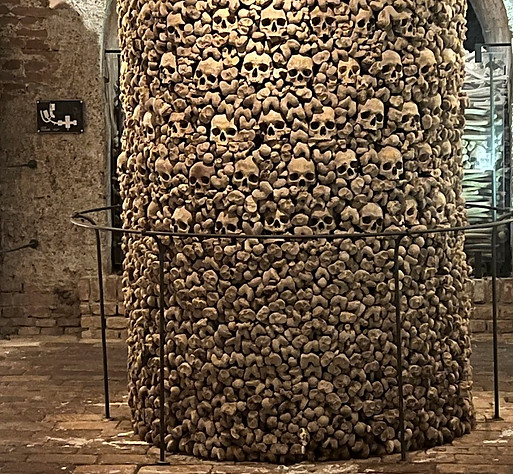
Spilberk Castle – The castle which offers the best views of the city was built in the 1200s, greatly expanded in the 1600s, became a prison on the 1700s, used as a military barracks in the 1800s, and again as a prison in the 1900s. Today it is home to a history museum. The grounds of the castle are free to roam, but the different interior places in the castle require their own tickets. We just opted to just see the casements which were used as a prison.

Heading 6


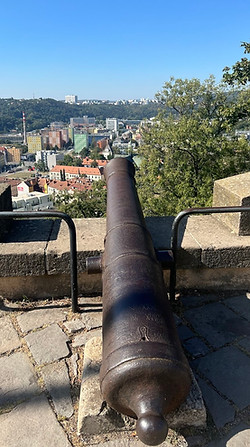
Labyrinth Under the Vegetable Market – In the 1200s, food and beverages merchants around the square began digging a series of cellars to store and preserve their goods. This eventually became a network of subterranean vaults. In 2009, these different cellars were connected by passageways and opened to the public by guided tours only. A few tours a day are offered in English. After descending into the darkness, you can see an alchemist’s laboratory (not originally located in the labyrinth), and exhibits on medieval food, wine and beer storage and lighting systems. The tour also illustrated some of the punishments given to dishonest craftsmen and merchants for crimes such as selling bad pork.

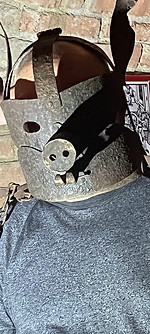

10-Z Bunker – 10-Z is a massive complex built in the side of a mountain to house 500 of the local elite for three days in case of a nuclear attack during the cold war era. I can’t imagine why they thought a radiated Brno would be safe to come back to after just three days. Part of the facility now houses a youth hostel.
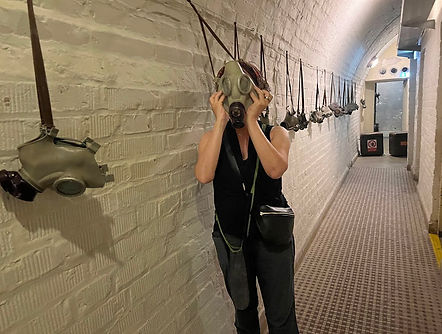
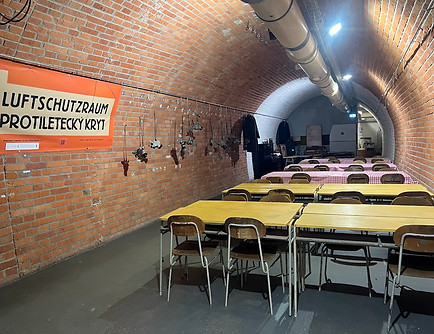
Český Krumlov Czechia
Overview – Český Krumlov is probably the most picturesque town we have ever seen with its stunning castle sitting high above the Vltava River, its beautiful gothic, renaissance and baroque architecture and its narrow alleyways seemingly untouched for hundreds of years. Exploring these alleyways was like entering a time warp.
Demographics – Český Krumlov has a population of 13,000.
Getting There – Český Krumlov is off the beaten path. The nearest train station is 40 minutes away and bus service to anywhere other than Prague or Vienna is limited.
Old Town – Český Krumlov is the Czech Republic’s second biggest tourist destination. Only 2,000 people live in the old part of the city while there are hotel beds for 6,000. That does not include the hordes of tourists arriving on day trips from Prague and Vienna. We were there in September, post peak season, and it was still crowded at midday, but was relatively peaceful by late afternoon.
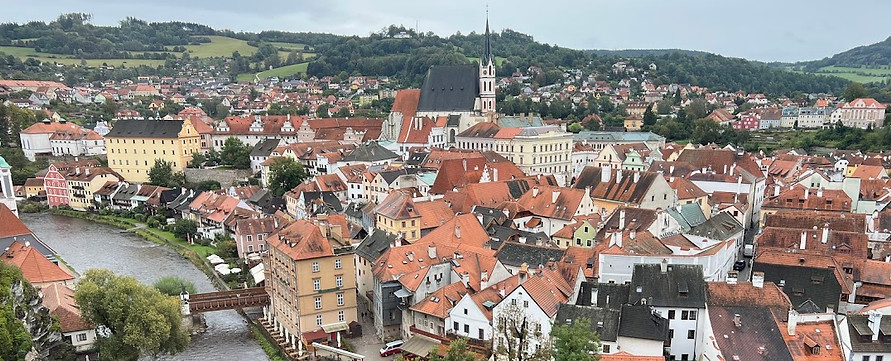
Heading 6

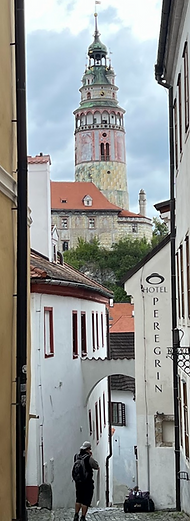

Heading 6
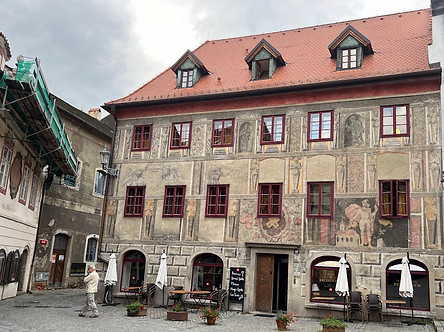

Heading 6


Český Krumlov Castle – This massive complex dating back to the 1400s consists of 40 buildings and palaces situated around five courtyards built during different periods by different owners. The exterior grounds and gardens of the castle are open to the public, but its interior can only be visited with an escorted tour. We chose to take Tour #1 which gave us a glimpse of the splendor of Bohemian noble living through the ages. A few tours a day are offered in English. To see everything we wanted required us to purchase four separate tickets.

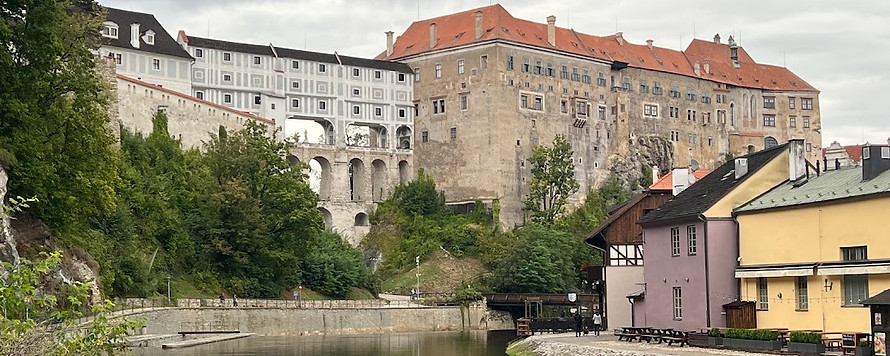
Heading 6




Castle Masquerade Ballroom – Considered a masterpiece of the Rococo period, this room is part of the #1 castle tour. The walls of the room are covered with paintings of aristocrats enjoying themselves in the middle of a masquerade festival. During the 1700s the partygoers would begin their evening dancing in the ballroom, then take an enclosed pedestrian bridge to watch a performance at the Baroque Theater, and finish their festivities in palace gardens for treats and fireworks display. It certainly was fun being an aristocratic in the 1700s.


Castle Baroque Theater – Baroque theaters were quite the rage in the royal courts of Europe during the 1600s and 1700s. From the hundreds that existed, only two remain today. What distinguished these theaters at the time were their impressive sets of cleverly designed movable scenes, special lighting and sound effects, and rich costumes that added magic and awe to the performances. The theater’s interior can only be viewed with a separate escorted tour. A few tours a day are offered in English.

Castle Tower – The tower was built with a Gothic core and completed in a Renaissance style. At the base of the tower is an interesting museum and gallery displaying important items from the castle armory and depositories, including the skeleton of Saint Reparat. After checking out the museum, you can climb the 162 steps to the tower’s observation deck using the museum ticket.



Castle Cellars – The cellars were built in the 1300s to level the steeply sloping terrain below the castle creating a large three-story subterranean complex. Today, the cellars form an eerie location for international exhibitions of ceramic art, organized by the Agency of Czech Ceramic Design. At the time of our visit, Miroslav Páral’s thought provoking and disturbing sculptures where on display. Entrance to the cellars requires an additional ticket.
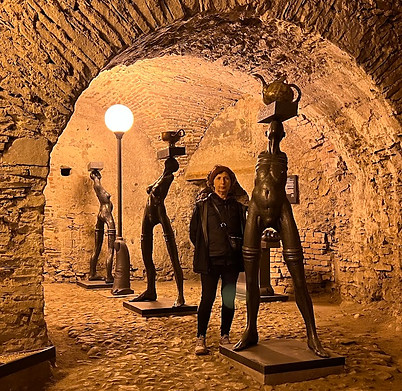

Rafting & Kayaking – A popular activity when visiting is to take a boat ride through the city along the Voltava River. Not only is it super fun but it provides you with a different perspective of the town. We found the weather when we were there to be a little cold and dreary for kayaking, So we opted instead to purchase seats on a one-hour wooden raft tour.


Karlovy Vary Czechia
Overview – Since the 1300’s Karlovy Vary has been Czechia’s most popular spa destination. Located in a beautiful river valley and adorned with stunning two-hundred-year-old architectural gems, it is no wonder that Karlovy Vary is now considered one of the premier spa towns in all of Europe with a large influx of Russian visitors. We saw several signs in Russian while exploring the town.
Demographics - Karlovy Vary has a population of 49,000.
Getting There – If you are coming from Prague, there are numerous buses and trains to choose from. If you are coming from anywhere else, you would still need to travel to Prague first and then transfer. We chose to take the bus, because it was faster than the train.


Heading 6


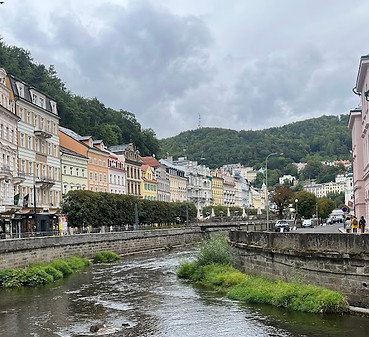
Lookouts – The center of town is surrounded by tall hills that are dotted with lookouts. The most popular is Diana’s lookout which can be reached by a funicular. We chose to hike up to the Deer Jump and Peter the Great Lookouts which are both on the same trail and are far less crowded than Diana’s.


Hot Springs & Colonnades – Visitors flock to these hot springs to fill their traditional porcelain spa cups with thermal mineral water believing these waters to have multiple health benefits. The waters flow from 81 individual springs, 15 of which are accessible to the public, and five of them covered by beautiful colonnades, each with its own unique architectural style. Doctors recommend different springs for their healing properties. For example, The Mill Spring (133°F) improves metabolism wellness, and The Freedom Spring (140°F) promotes the dilution of the bile. Temperatures in these springs range between 86 to 163 degrees.



Heading 6
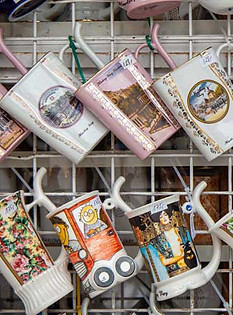

Underground the Hot Spring Colonnade – The underground tour takes visitors through the tunnels of the thermal springs pumping and distribution network. While in the tunnels you can see the effects of the mineral rich water when it comes in contact with other objects. There is a section of a pipeline on display showing the thick accumulated sediments. There were also racks of paper roses and various porcelain objects, bathed in a continuous flow of water. These objects eventually take on a brown color as the minerals cover them, and in seven days, they are ready for sale. The petrified stone roses are a popular souvenir for tourists visiting the town. The excess flow of mineral water into the adjacent river has left such a thick layer of deposits that it was possible for our tour guide to walk out onto the water. Tours are only offered in English if they have enough bodies.
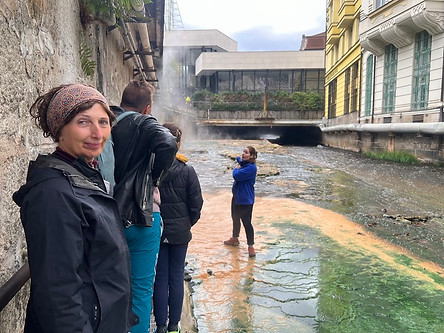
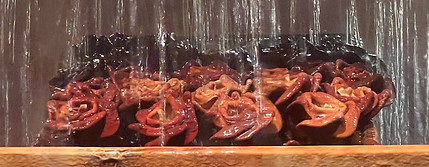
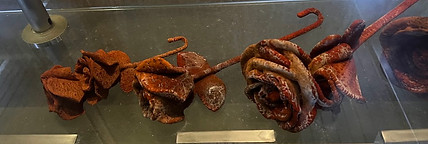
Heading 6
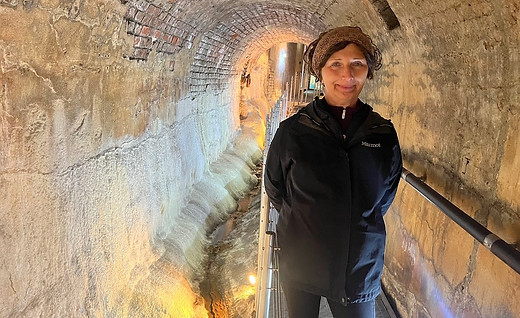

Bohemian Switzerland Czechia
Saxon Switzerland Germany
Overview – The primary reason we visited this region was to go hiking in the Bohemian Switzerland and Saxon Switzerland National Parks known for their dramatic Elbe sandstone mountains, impressive canyons and craggy sandstone towers rising from dense forests. Besides the national parks, the territory is home to medieval castles and countless historical villages that dot the countryside. This region is so beautiful, it was used as the location for filming The Chronicles of Narnia.
Getting Around – Many of the sites we visited in this region are accessible by mass transit. But to see everything we needed to rent a car.

Heading 6

Rathen, Germany – Rathen is a delightful little spa town located in a narrow crotch of a mountain facing the Elbe River with some of its houses and hotels being accessible only by foot. We were only able to explore part of the village being that the area was flooded when we were there. The river you see flowing through the bottom of the picture is actually the village’s main road.


Hřensko, Czechia – This pretty village is filled with small hotels catering to the hikers exploring the region and water enthusiasts rafting the Edmundova Scuteska River. Unfortunately, there was no rafting when we were there due to the flooding.



Königstein Fortress, Germany – This formidable castle sits on a 23-acre rock plateau that towers 790 feet above the Elbe River. The still intact complex is home to some fifty buildings, some being over 400 years old. Today, the major buildings have been converted into museums. To enter the fortress an opposing army would need to either storm the 138 feet heigh walls or force their way through a series of four imposing gates. One entrance fee gets you inside the castle and all the museums. For an extra charge there is a trolly from the parking lot to the base of the wall and an elevator to reach the courtyard. We chose to walk the short but steep route up.


Heading 6



Heading 6


Basteibrücke Bridge Trail, Germany (2.3 miles – 620 feet elevation gain) – This is by far the most popular trail in the region. It begins in the village of Rathen on the Elbe River. Parking is limited there, so our GPS took us across the river to a ferry dock. Being that the area was flooded during our visit the ferry was not running. When we finally reached Rathen we had to park outside of the village. The trail gradually climbed from the river passing through a series of interesting rock formations finally reaching the Basteibrücke Bridge. This stone bridge was built in 1851 to link several jagged formations and provides great views of the surrounding rock formations.


Heading 6



Uttewalder Grund Trail, Germany (5.1 mile – 720 feet elevation gain) – After walking through the village of Lohmen, we come to a stairway that led us down to a beautiful canyon. The woods here are so thick that we did not realize we were in a canyon until almost reaching the bottom. From here the trail was fairly level following a loop through various canyons eventually returning to the stairs. The park had a variety of poorly marked crisscrossing trails, and most of time we were by ourselves. Without the aid of my trusty AllTrails GPS app we would have had a difficult time finding our way out.



Pravčická brána Trail, Czechia (2.6 miles – 820 ft elevation gain) – Measuring 53 feet high and 89 feet long, Pravčická brána is the largest natural arch (some might say bridge) in Europe. The trail to the arch rose gradually zigzagging in and out of various canyons until we reached a long series of concrete steps. At the top of these steps before reaching the arch sits Falcon Nest, a former prince's swiss chalet built in 1881 that is now being used as a restaurant and tourist information center. The trail then continues going up a little farther for a great viewpoint of the arch.

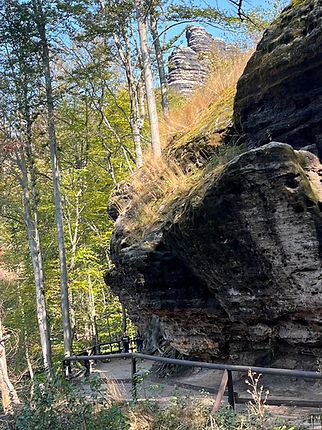
Heading 6


Prague Czechia
Overview – We saved the best city for last. With its narrow cobble stone streets, alluring architecture, enchanting spires, daunting hilltop castle and statue-lined bridges, Prague is an urban fairy tale come to life. Prague is one of the most beautiful cities we have ever seen, perhaps only being outshined by Paris and Venice. The old town of Progue is one of the few cities in Eastern European that survived World War II and the communist period relatively untouched offering stunning examples from every major school of architecture, from 12th century Gothic to present day Cubism. We spent six days in the city but could have easily spent a couple of weeks without running out of things to see and do. Prague is a major tourist destination. Even though we arrived in late September, past the peak season, some popular parts of the old city were very crowded
Demographics – Prague’s metropolitan population is estimated to be 1.3 to 1.9 million.
Getting Around – Almost everything we wanted to see was in the old city within walking distance. For the few places outside of this area, the mass transit system was excellent.
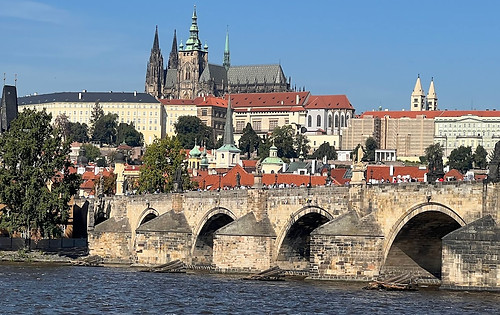


Heading 6

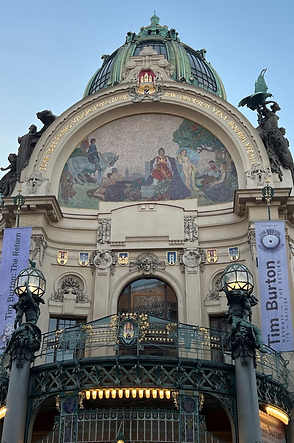

Heading 6



Heading 6
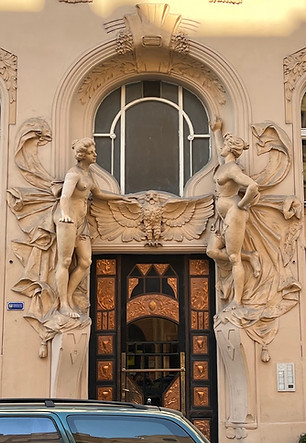

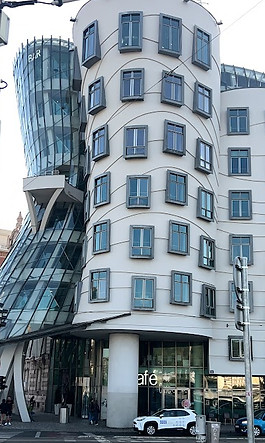
Old Town Square – Considered to be the most significant square in the city. The major buildings lining the square are the Old Town Hall which houses the astronomical clock, the Baroque Church of St Nicholas, and the Rococo Kinský Palacel
.
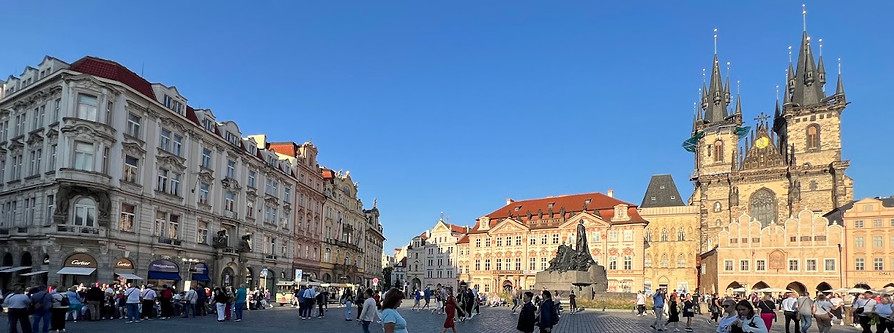
Heading 6


Heading 6

Astronomical Clock – The clock was built in 1410 making it the oldest functioning clock in the world. The clock contains many different moving elements that would be impossible to decipher without a guide. Different dials show Old Bohemian Time, Babylonian Time, German Time (that we presently use) and the zodiac months. The moon is represented by a silver/black ball that rotates on a sphere and around the clock. Daylight is represented by the blue background, dusk by the red, and night by the black. On the hour the clock offers a short show of the 12 Apostles appearing in windows and the Grim Reaper waving his scythe.
Prague Castle – The original castle was built in the late 800s. Occupying an area of over 17 acres, Prague Castle in considered to be the largest castle complex in the world and is home to four churches, four palaces, five halls, four towers and a variety of other buildings of various architectural styles. The grounds and gardens of the castle are free to explore. There are several museums in the compound, each requiring a different admission fee. We chose to purchase a combo ticket that included St Vitus Cathedral St George’s Basilica and the Golden Lane. This cathedral is a prominent example of Gothic architecture and is the largest and most important church in the Czech Republic. The alley, with its small, colorful houses was home to numerous writers, craftsmen and artists, including Franz Kafka. We also enjoyed our visit to Lobkowicz Palace that also sits on the Castle grounds.

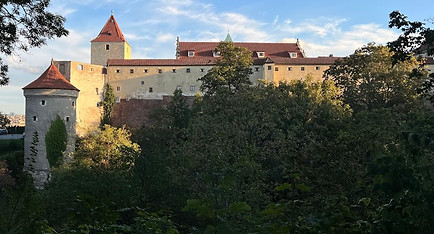
Heading 6

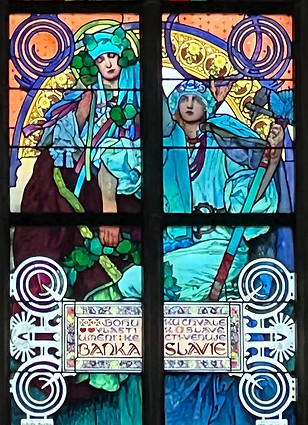
Spanish Synagogue – This synagogue which was built in the late 1800s in a lavishly ornate Moorish-style is the most beautiful I have ever seen with stucco arabesques adorning the walls along with other Islamic motifs such as flowers and geometric patterns found throughout the building. The synagogue is no longer being used for worship and is now a Jewish museum. Access to four synagogues and the cemetery is possible with one combo ticket.


Jewish Cemetery – The cemetery which was used from the early 1500s to the late 1700s is one the oldest surviving Jewish burial grounds in the world. Since the Jewish community was not allowed to purchase a plot of land large enough to accommodate nearly 300 years of burials, layers of dirt were added when the graveyard became full, raising the old tombstones to the new higher level. They did this eleven times which explains the dense forest of tombstones you see today, and why the grounds of the cemetery are so much higher than the surrounding streets.
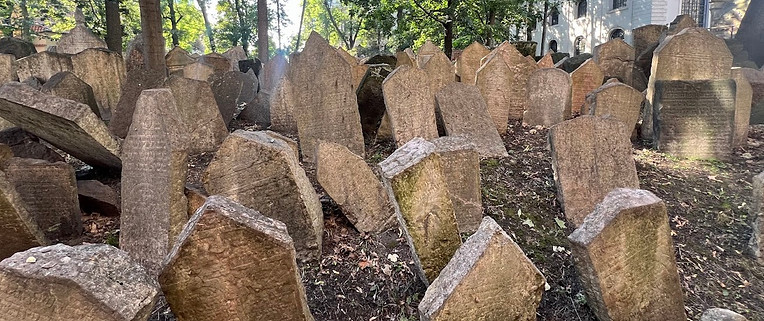
Pinkas Synagogue – The synagogue which dates to the early 1500s is now a very moving memorial to the 77,297 victims of the Shoah from this region. All the synagogue’s walls are lined with the name, and the dates of birth, and death of these victims. If the exact date of death was not known, the date the person was sent to a concentration camp was used.
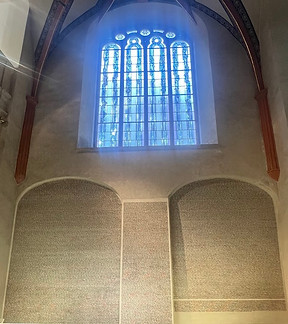


Charles Bridge – Built in 1357, this bridge remained Prague’s only means of crossing the Vltava until 1841. The bridge is lined on both sides with 30 Baroque statues and its entryways are guarded by two formidable Gothic towers both offering great up-close views of the city. The bridge also had the highest concentration of tourists and was wall to wall people every time we crossed it.

Heading 6

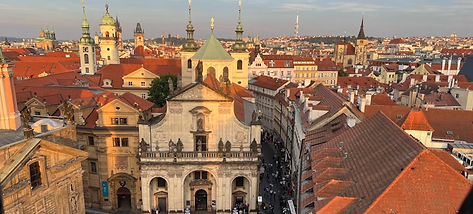

Petrin Lookout Tower – This 208-foot tower sits on top of a hill in the middle of a park offering the best big picture views of Prague. You can reach the viewing platform by climbing the stairs, or for an additional fee, taking a tiny elevator. Being that we were already tired from our 650-foot climb up the hill we opted for the elevator.

Lennon Wall - Located in a small, secluded square, this wall has become a symbol for freedom and political struggle. Starting in the 60’s as a place of expression for poetry and protest against the communist regime, it took a new life in 1980 after the assassination of John Lennon, when an unknown artist painted a single image of the singer-songwriter and some of his lyrics. Afterwards, young Czechs began to write their grievances on the wall. The liberalization movement these students followed was called Lennonism (not to be confused with Leninism). The wall has been whitewashed numerous times and the images we see today only date back to 2019.

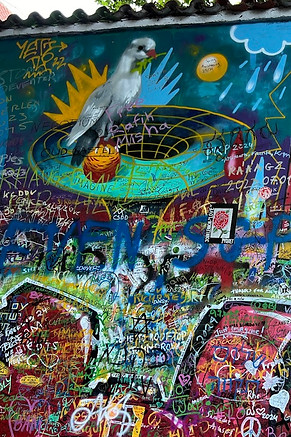
Kutna Hora – If you are having an extended stay in Prague and looking for a relaxing day trip, the small picturesque town of Kutna Hora is only a 50-minute train ride away. The two main things to see here are St Barbara's Cathedral and the Sedlec Ossuary. The cathedral is one of the most famous Gothic churches in central Europe. The ossuary at the Church of All Saints contains the remains of an estimated 40,000 to 70.000 people. The Ossuary in its present form with its baroque decorations dates back to the 1700s. In the 1800s the Schwarzenbergs became the church's new patrons and commissioned new works including the bone chandelier and the bone Schwarzenberg coat-of-arms.


Heading 6


Heading 6
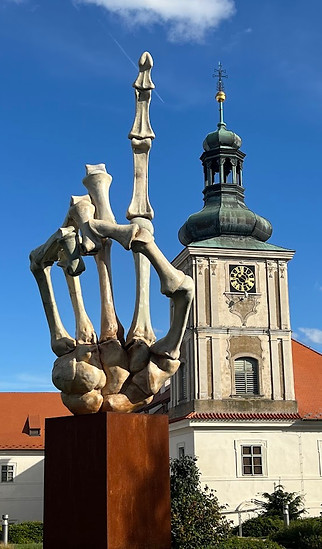

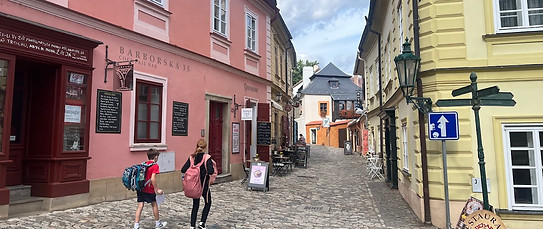
Estate Theatre – This grand theatre that first opened its doors in 1783 has strong links to Mozart. This is where he conducted his world premiere of Don Giovanni, it is the only theatre still standing where Mozart performed, and this was the location for the opera scenes in the movie Amadeus. Prague is a dream come true for opera, ballet and classical music lovers. There are three opera houses in the city rotating their productions daily. So, during the peak season, one could visit for over a week and see a different performance every evening. We chose to spend our last night in Prague viewing the Marriage of Figaro by Mozart in this theater. A unique way to end our adventure.

